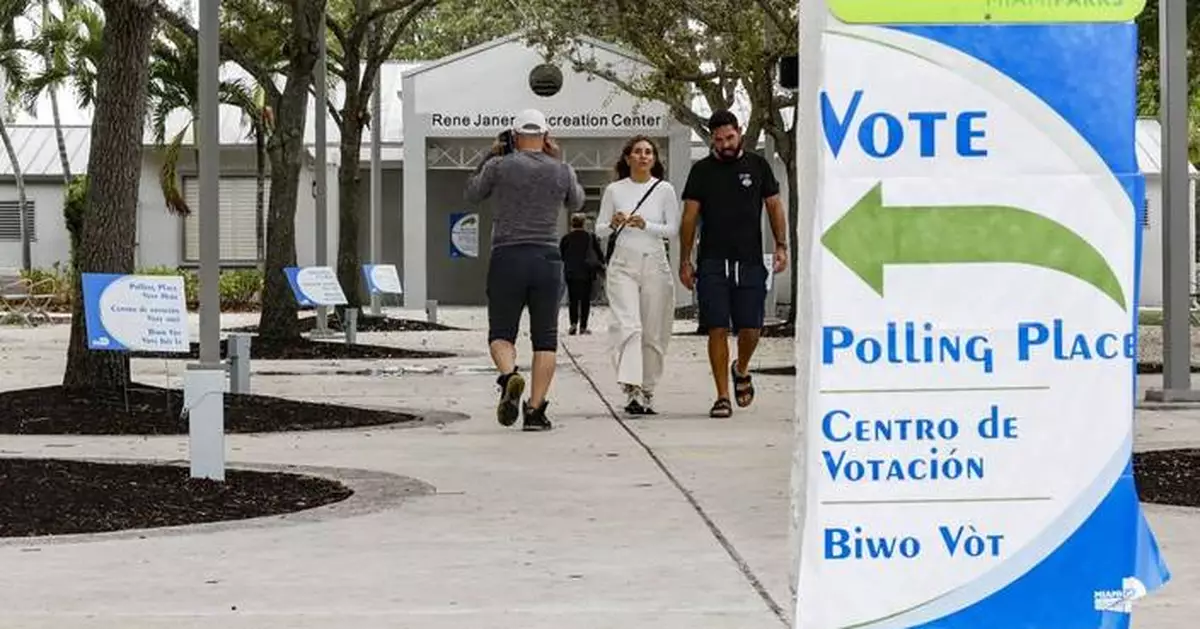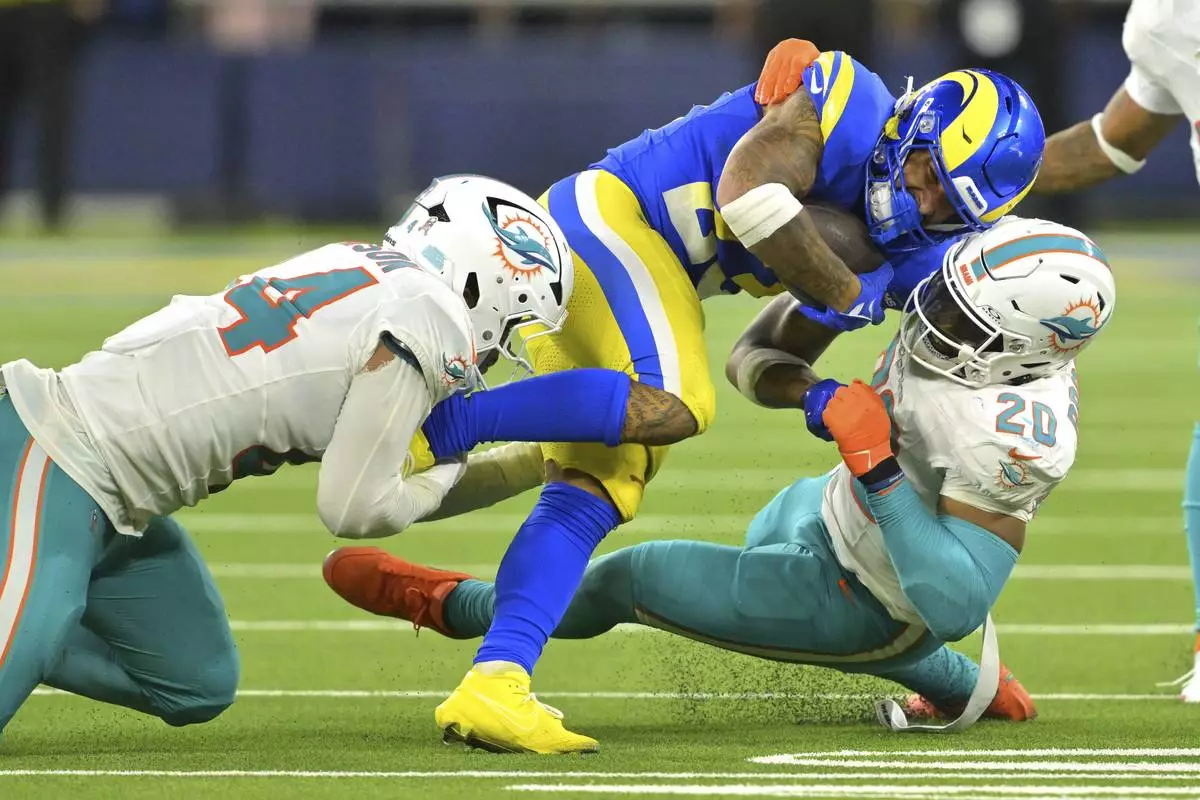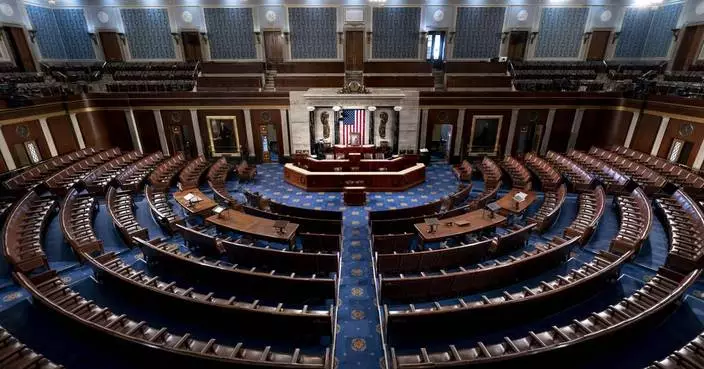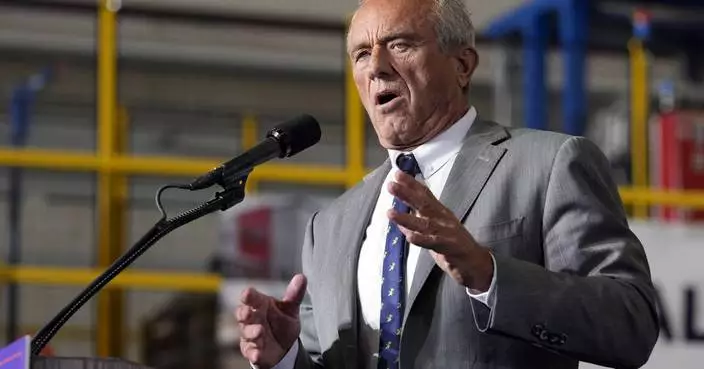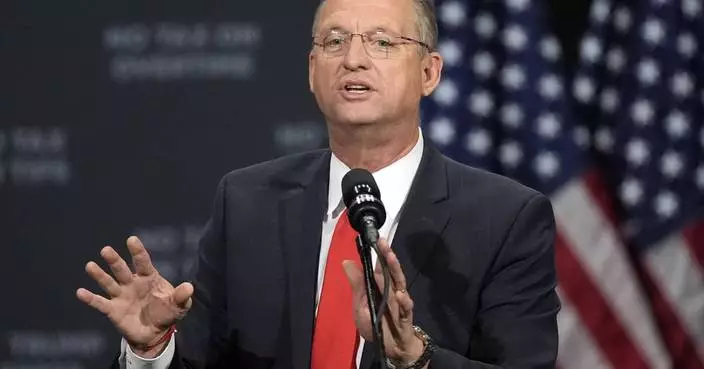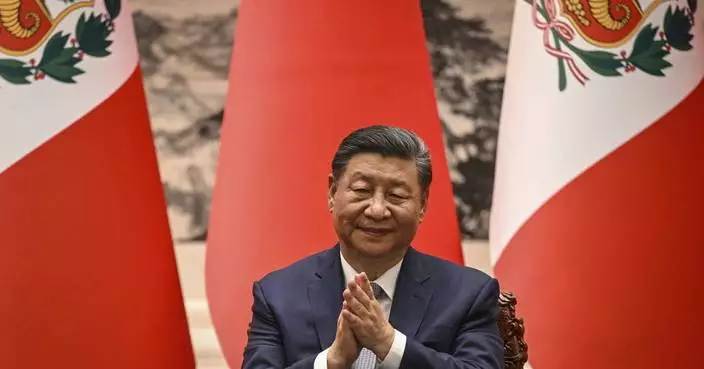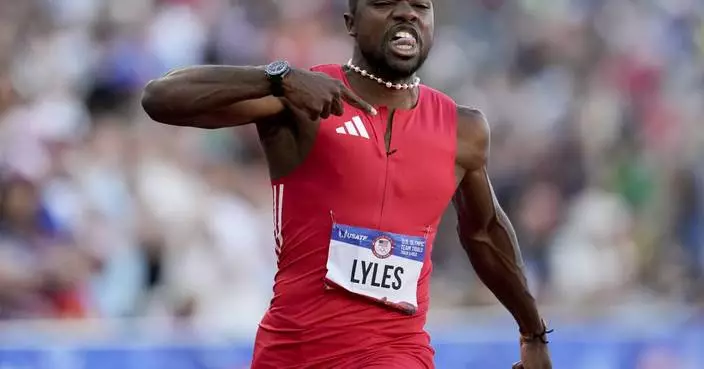MIAMI (AP) — From Pennsylvania to Florida to Texas, areas with high numbers of Hispanics often had little in common on Election Day other than backing Republican Donald Trump over Democrat Kamala Harris for president.
Trump, the president-elect, made inroads in heavily Puerto Rican areas of eastern Pennsylvania where the vice president spent the last full day of her campaign. Trump turned South Texas' Rio Grande Valley, a decadeslong Democratic stronghold populated both by newer immigrants and Tejanos who trace their roots in the state for several generations.
He also improved his standing with Hispanic voters along Florida's Interstate 4 corridor linking the Tampa Bay area — home to people of Cuban, Venezuelan, Nicaraguan, Colombian and Puerto Rican origin — with Orlando, where Puerto Ricans make up about 43% of the local Hispanic population. Trump was the first Republican since 1988 to win Miami-Dade County, home to a sizable Cuban population and the country’s metropolitan area with the highest share of immigrants.
It was a realignment that, if it sticks, could change American politics.
Texas and Florida are already reliably Republican, but more Hispanics turning away from Democrats in future presidential races could further dent the party's “blue wall” of Pennsylvania, Michigan and Wisconsin, that had helped catapult it to the White House before Trump romped through all three this time. The shift might even make it harder for Democrats to win in the West, in states such as Arizona and Nevada.
Harris tried to highlight the ways Trump may have insulted or threatened Latinos.
Trump, in his first term, curtailed the use of Temporary Protected Status, which Democratic President Joe Biden extended to thousands of Venezuelans, and tried to terminate the Obama-era Deferred Action for Childhood Arrivals program. He also delayed the release of relief aid to Puerto Rico after Hurricane Maria in 2017 until nearly the end of his term, having long blasted the island's officials as corrupt and inept.
Once he returns to the White House, Trump has pledge to stage the largest deportation operation in U.S. history. That could affect millions of families in mixed-status homes, where people who are in the United States illegally live with American citizens or those with legal residency.
But the Democratic warnings did not appear to break through with enough voters for Harris. Now the party must figure out how to win back votes from a critical, fast-growing group.
“Trump, he’s a very confounding figure,” said Abel Prado, a Democratic operative and pollster who serves as executive director of the advocacy group Cambio Texas. “We have no idea how to organize against him. We have no idea how to respond. We have no idea how to not take the bait.”
Ultimately, concerns about immigration did not resonate as much as pocketbook issues with many Hispanics.
About 7 in 10 Hispanic voters were “very concerned” about the cost of food and groceries, slightly more than about two-thirds of voters overall, according to AP VoteCast, a survey of more than 120,000 voters nationwide. Nearly two-thirds of Hispanic voters said that they were “very concerned” about their housing costs, compared with about half of voters overall.
Trump had a clear edge among Hispanic voters who were “very concerned” about the cost of food. Half said he would better handle the economy, compared with about 4 in 10 for Harris. Among Hispanic voters who were very worried about crime in their community, Trump had a similar advantage.
“When they looked at both candidates, they saw who could improve our economy and the quality of life,” said Marcela Diaz-Myers, a Colombian immigrant who headed a Hispanic outreach task force for the Pennsylvania Republican Party. “Did he sometimes offend? Yes. But that happens in political campaigns. Many of the people who voted for President Trump were able to get past this and trust that he will move the country in the right direction.”
Harris promised to lower grocery prices by cracking down on corporate price gouging and to increase federal funding for first-time homebuyers. Also, recent violent crime rates have declined in many parts of the country.
Shen also spent many of the final days of the campaign trying to capitalize on remarks by a comic who spoke at a Trump rally in New York and joked that Puerto Rico was a “floating island of garbage.” She even leaned on Puerto Rican celebrities — from Bad Bunny to Jennifer Lopez — to decry racism.
But Trump nonetheless gained ground in some of the areas with the highest concentration of Puerto Ricans in Pennsylvania, the state where Harris spent more time campaigning than any other. He won the counties of Berks, Monroe and Luzerne — and lost Lehigh County by fewer than 5,000 votes against Harris. Biden had carried it by nearly three times that margin in 2020.
Trump's victory was even wider in Florida, where nearly one-quarter of residents are Hispanic. He won the state by 13 percentage points — or about four times his 2020 margin.
Trump also flipped the central Florida counties of Seminole and Osceola, where many Venezuelans have immigrated as their home country becomes increasingly unstable, and narrowed Democrats' advantage in Orange County, which is also heavily Venezuelan.
Farther south, Trump won Miami-Dade County with an 11-percentage point advantage after losing it by 7 percentage points to Biden and by 30 percentage points to Democrat Hillary Clinton in 2016.
Kevin Marino Cabrera, a Miami-Dade County commissioner who was state director for Trump’s 2020 campaign, said Hispanics rejected the “woke ideology." Trump has made his opposition to transgender rights central to his campaign.
“To be clear, Hispanic voters are not buying what Democrats are selling,” Cabrera said.
The same was true in South Texas, where Hispanics are largely of Mexican descent.
Prado, the Democratic operative and pollster, lives in Hidalgo County, which is 92% Hispanic and the most populous part of the Rio Grande Valley. Trump carried it after losing by more than 40 percentage points in 2016. Trump swept all the major counties along the Texas-Mexico border.
Prado said Democratic county commissioners and state legislators helped secure funding for new bridges across the Texas-Mexico border and for other initiatives that have sparked commerce and economic and job growth in the area. Yet, he said, “the Republican Party has done a really good job of inserting themselves as an answer to nonexistent problems and then taking credit for (things) that they didn’t do.”
Prado said many Hispanics in the Rio Grande Valley, particularly devoutly religious ones, were alienated by national Democrats' focus on reproductive and transgender rights, with the latter becoming a key political weapon for Republicans.
“This nonsense about you’re going to send your son to school and he’s gonna come back a girl,” he said. "Our side scoffed because we said, ‘No one’s going to believe that.’ But, no, it struck a chord.”
Others were simply looking to cast a defiant vote, Prado said, or were inspired by the idea of self-made people embracing the American dream, even though Trump got his start in business with a large loan from his father.
Daniel Alegre, CEO of TelevisaUnivision, which owns the Spanish-language television Univision, along with other television and radio properties, said Trump's gain among Hispanics was less about party than issues and that Hispanics were most concerned about the economy and immigration.
Alegre, whose network hosted town halls in October with both Trump and Harris, also noted that there’s a growing feeling among Hispanic citizens that new immigrants were getting more government services than were available when immigrants who have been here longer arrived in the United States — and that the Trump campaign tapped into resentment around that issue.
“The most important thing either party can do is keep their ears to the ground and stay connected to the community,” he said, and in this case, the Trump campaign clearly accomplished that.
Weissert reported from Washington. Associated Press writers Linley Sanders in Washington and David Bauder in New York contributed to this report.

A voter exits the polling station on Election Day at the Little Haiti Cultural Complex's Caribbean Marketplace in Miami's Little Haiti neighborhood Tuesday, Nov. 5, 2024. (Carl Juste//Miami Herald via AP)
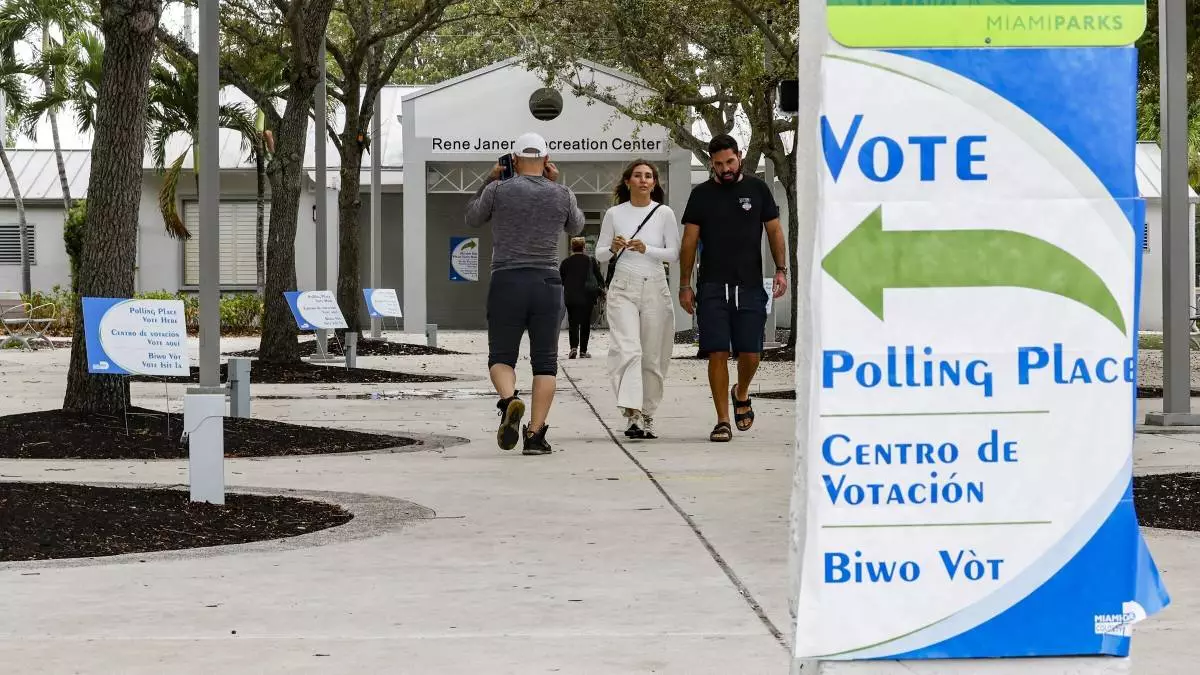
Voters arrive and depart precinct 573 at the Rene Janeiro Recreation Center in Shenandoah Park during Election Day in Miami, Tuesday, Nov. 5, 2024. (Al Diaz//Miami Herald via AP)


